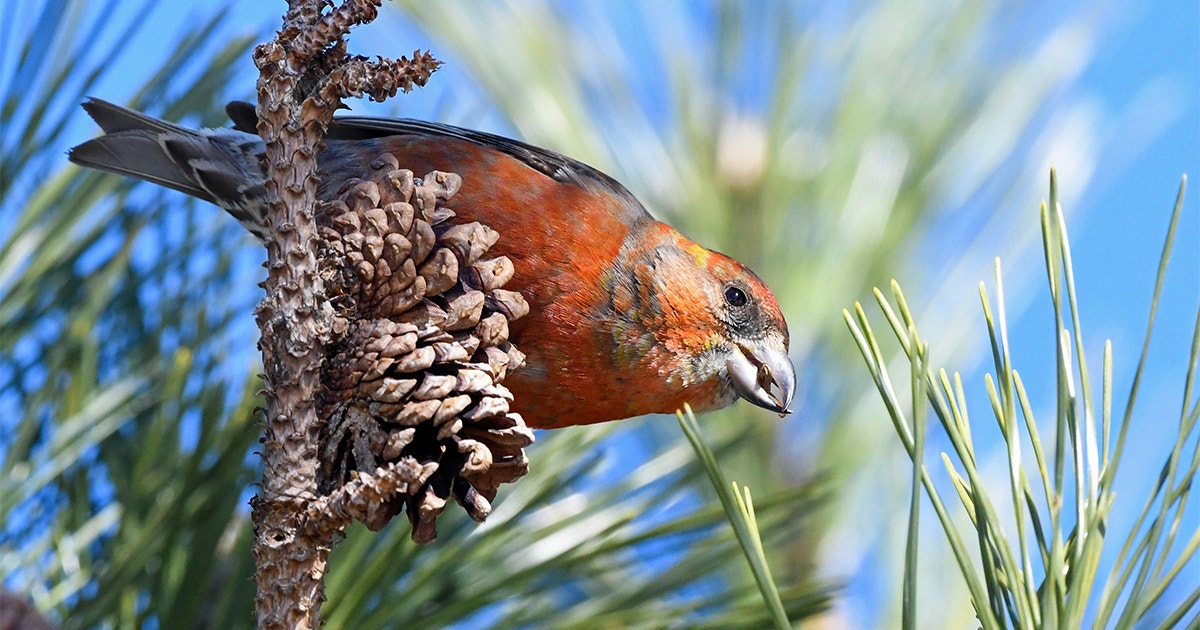Beloved by the public, bird enthusiasts, and researchers alike, finches are among our most familiar birds. Yet, they are deceptively complex, presenting some of North America’s most intricate avian life histories and identification challenges. Covering this diverse, multifaceted group in a single, accessible guide requires finesse and expertise. Enter Lillian Stokes and Matt Young.
For decades, Stokes and her husband Don have been trusted voices in birding, sharing their expertise through 35 Stokes Guides—selling more than 5 million copies—and a popular television series, reaching millions of homes. As an award-winning nature writer and photographer, Lillian has also managed an active blog since 2006. Young, the founder of the Finch Research Network, is a leading authority on North American finches. Together, they have created The Stokes Guide to Finches of the United States and Canada, an authoritative and indispensable compendium that achieves the rare feat of offering something for everyone, making it a must-have for any naturalist’s library.
As a reference guide, it is a breath of fresh air. Going beyond the expected identification tips, the book covers everything from fundamental basics (“What is a finch?”) to advanced topics such as the call types, food sources, and distributions of the birds that make up the confounding Red Crossbill complex, of which Young is an expert. As usual, the species profiles are the bulk of the content, and this comprehensive handbook provides detailed life history information for 18 breeding finches, nine vagrants, and 17 Hawaiian honeycreepers, covering vocalizations, breeding, diet, habitat, migration, conservation, and distribution.
One of the book’s most notable features is its innovative approach to vocalizations, dividing them into ones given by males, females, and both, not just “calls” and “songs.” This distinction reflects recent scientific insights into oft-overlooked female bird songs, which is important for better understanding and conserving the birds we love. Additionally, the guide presents clear and concise range maps for species, subspecies, and even irruptions, using familiar color palettes and intuitive features like dashed lines and dots.
Beyond the species overviews, chapters covering feeding and attracting finches, movements, irruptions, and research and conservation efforts empower readers in meaningful ways with actionable tips and advice. This blend of practical information and thoroughness makes the guide a powerful resource that perfectly balances breadth and depth in a compact and engaging format.
Visually, the guide is a feast, immersing readers in the vibrant world of finches. Featuring more than 345 stunning photographs, it provides more than simple images to help with identification points (which are still appreciated when present). From flocks of Evening Grosbeaks filling a tray feeder and Redpolls working through a weedy field to White-winged Crossbills migrating past the dunes of Tadoussac, Québec, the images are emblematic, educational, and inspiring.
Tables, charts, and spectrograms enrich the guide, offering valuable insights into challenging species complexes like Red Crossbill.
Interspersed among these photos and species accounts are informative deep dives and detailed identification guides. Examples include a two-page spread on telling apart common red finches (Purple, House, and Cassin’s) and a four-page layout for distinguishing Common and Hoary Redpolls—still useful despite recent taxonomic changes. Tables, charts, and spectrograms enrich the guide, offering valuable insights into challenging species complexes like Red Crossbill, which is covered in an exhaustive 40-page breakdown.
Perhaps Stokes and Young’s most significant achievement, however, is the dedicated section on endangered Hawaiian honeycreepers—descendants of rosefinches from Central Asia who, five to seven million years ago, found their way to Hawai’i and eventually evolved into more than 50 distinct species through adaptive radiation. Unfortunately, habitat loss, human activity, pests, and diseases like avian malaria reduced their numbers to just 17 species today, 11 of which are endangered, with several in fear of vanishing forever soon. At the time of writing this review, the ‘Akikiki is functionally extinct in the wild, with only 0-1 individuals likely remaining (per Young), highlighting the alarming rate at which we are losing this once diverse group of finches.
Historically, Hawai’i’s birds have seldom appeared in North American field or reference guides. This is because the region’s native avifauna shares closer affinities with birds from Asia and Oceania than mainland U.S. birds. However, since the American Birding Association included Hawai’i in their ABA Area in 2016, there has been a significant shift in the collective effort to showcase the remarkable species of Hawai’i and the severe conservation challenges they face in the world’s bird extinction capital. By including the honeycreepers, this book provides the most complete coverage of U.S. and Canadian finches to date while raising awareness about the importance of protecting these threatened species.
If it seems from this review as though the The Stokes Guide to Finches does it all, that’s because it does. This is much more than a mere finch identification manual. A testament to these birds’ remarkable intricacies and diversity, the guide is just as much a vibrant exploration and celebration of finches both familiar and irregular. That it does all of this while balancing rigorous detail with accessibility makes it an exceptional and essential resource for anyone passionate about finches and dedicated to their conservation.
The Stokes Guide to Finches of the United States and Canada, by Lillian Stokes and Matt Young, 352 pages, $21.99. Available here from Little, Br0wn and Company.

